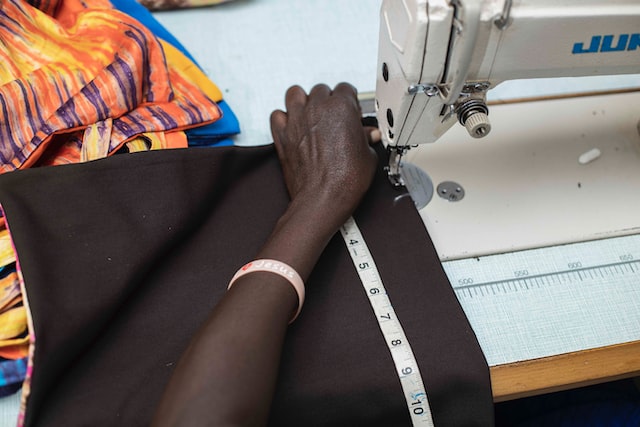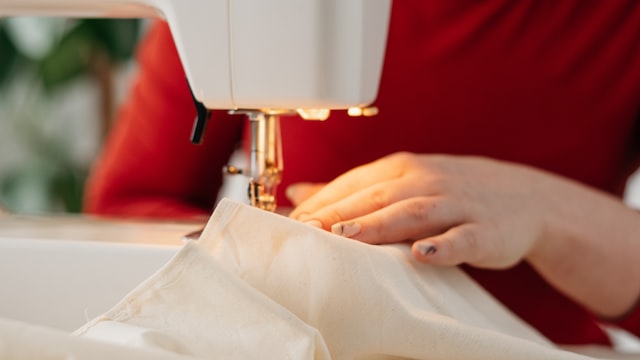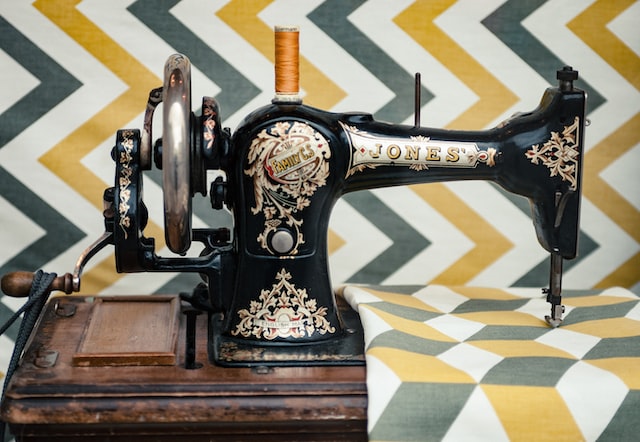If you’re like most people, you don’t know how to fix a sewing machine. That said, it’s not as difficult as it may seem. In this blog post, we’re going to break down some of the most common issues that can arise with a sewing machine and how to repair a sewing machine. From threading problems to jammed needles and more, we’ll help you find the right solution for all your sewing machine dilemmas. So, let’s get started!

How to Repair Sewing Machine: Complete Guide
If your sewing machine isn’t working properly, don’t despair! In most cases, you can fix the issue yourself without having to take it to a repair shop. In this complete guide, we’ll show you how to troubleshoot and repair common sewing machine problems.
We’ll start by discussing some of the most common issues that can cause your sewing machine to malfunction. Then, we’ll walk you through step-by-step instructions for how to fix each problem.
- Clean and oil your sewing machine
- Adjust the tension
- Replace a broken needle
- Fix a skipped stitch
- Repair a jammed bobbin case
With just a little bit of time and effort, you can get your sewing machine running like new again!

4 Ways to Learn Sewing Machine Repair
Sewing machines are one of the most versatile tools in a sewer’s arsenal. But, like any tool, they can break down or have issues from time to time. When that happens, it’s important to know how to troubleshoot and repair the issues yourself. Here are 4 ways to learn sewing machine repair:
1. Read the instruction manual that came with your sewing machine. This is a great resource for understanding how your specific machine works and what you need to do to maintain it.
2. Talk to a local sewing machine repair person or shop. They can help you understand common issues and how to fix them.
3. Watch online tutorials. There are many helpful videos out there that can show you step-by-step how to fix common sewing machine problems.
4. Take a class. If you want a more hands-on approach, consider taking a sewing machine repair class at your local community college or trade school.

Some Benefits of Learning how to Repair Your Sewing Machine
When it comes to sewing machines, there are a lot of different benefits that come along with learning how to repair your own. For one, it can save you a lot of money in the long run. If you have a problem with your machine and take it to a shop, they will likely charge you for both the repairs and the service call.
Additionally, learning how to repair your sewing machine can be incredibly rewarding. It’s a great feeling to be able to fix something yourself, and it can also give you a sense of satisfaction and accomplishment. Finally, if you’re someone who likes to sew frequently, having a well-functioning sewing machine is essential. By learning how to troubleshoot and repair issues with your machine, you can ensure that it will always be ready when you need it.

You’ll Save Money on Sewing Machine Repairs
If you’re like most people, you probably don’t think about your sewing machine until it stops working. Then, you’re faced with a choice: take it to a professional for repairs, or try to fix it yourself.
If you opt for the latter, you can save yourself a lot of money. Sewing machine repairs can be expensive, and if you’re not careful, you could end up spending more than the machine is worth.
But with a little bit of knowledge and the right tools, you can troubleshoot and repair most issues yourself.

Enjoy The Satisfaction of Fixing Your Own Sewing Machine
Sewing is a great way to express your creativity, but it can be frustrating when your sewing machine isn’t working properly. Luckily, many common sewing machine problems can be fixed at home with a little troubleshooting. With some patience and a few tools, you can get your machine up and running again in no time.
One of the most common sewing machine issues is a jammed bobbin. If your bobbin becomes jammed, first remove the bobbin case and clear any debris that may be preventing the bobbin from spinning freely. If the problem persists, try adjusting the tension on the bobbin case.
Another common issue is thread bunching or breaking. This is usually caused by incorrect thread tension. First, check that your upper thread tension is properly adjusted. If the problem persists, try using a different type of thread or needle.

If your sewing machine is skipping stitches, it could be due to a dull needle. Try replacing the needle with a new one to see if that solves the problem. If not, there may be an issue with the timing of your machine. Consult your owner’s manual for instructions on how to adjust the timing of your machine.
With a little troubleshooting, you can fix many common sewing machine issues at home. By taking care of small repairs yourself, you’ll extend the life of your machine and save money in the long run.
Read the Manual for Your Sewing Machine
Before you start poking around and trying to fix your sewing machine on your own, take a step back and consult the manual. The manual for your particular model of sewing machine will have a lot of valuable information that can help you troubleshoot and fix common issues.
For example, the manual will likely have a section on common problems and how to solve them. It will also have detailed instructions on how to properly maintain your sewing machine. By taking the time to read through the manual, you can save yourself a lot of time and frustration when it comes to fixing your sewing machine.
How to Repair a Sewing Machine When it Got Stuck
If your sewing machine has gotten stuck, there are a few things you can do to try and repair it. First, check to see if anything is obstructing the needle or the feed dogs. If there is, remove it and see if the machine will start sewing again. If not, you may need to consult your sewing machine’s manual to troubleshoot other possible issues.

Sewing Machine Repair At Home
If you’re a sewing enthusiast, then you know that a broken sewing machine can be a real pain. But before you take it to a professional for repairs, there are some things you can try at home to troubleshoot and repair the issue.
One of the most common sewing machine problems is jammed threads. If your machine is jamming, first check to see if the bobbin case is inserted correctly. If it’s not, that can cause tension problems that result in jams.
If the bobbin case is in place but you’re still having trouble, take a look at the needle. It might be bent or dull, which can also cause jams. If the needle looks fine, then the problem might be with the thread tension. To fix this, simply turn the tension knob until the threads are no longer slipping or bunching up.

Another common issue is skipped stitches. This can be caused by several different factors, such as a bent needle, incorrect thread tension, or even using the wrong type of needle for your fabric. Again, start by checking the needle and adjusting the tension if necessary. If that doesn’t work, then consult your sewing machine manual to see if you’re using the correct type of needle for your fabric.
If your sewing machine just won’t start at all, then there could be an issue with the power cord or switch. First, check to make sure that both are securely plugged in. If they are, then flip
Conclusion
So now you know how to repair a sewing machine. I know Fixing a sewing machine is not always easy, but by using the troubleshooting steps outlined in this article you should be able to identify the issue and repair it without having to take your machine to a professional. With some patience and dedication, fixing a sewing machine yourself can save time and money while also increasing your knowledge of the inner workings of this amazing tool.
FAQs
How do I fix a sewing machine at my home?
Sewing machines can be difficult to repair on your own, but luckily there are plenty of tutorials and guides available online. If you’re having trouble figuring out how something works, start by searching for a related tutorial or article on the official Sewing Machine Repair website.

[…] trouble with your thread breaking at the needle, there are a few things you can try to fix the issue. First, check to make sure that your needle is inserted correctly and is the correct size and type […]